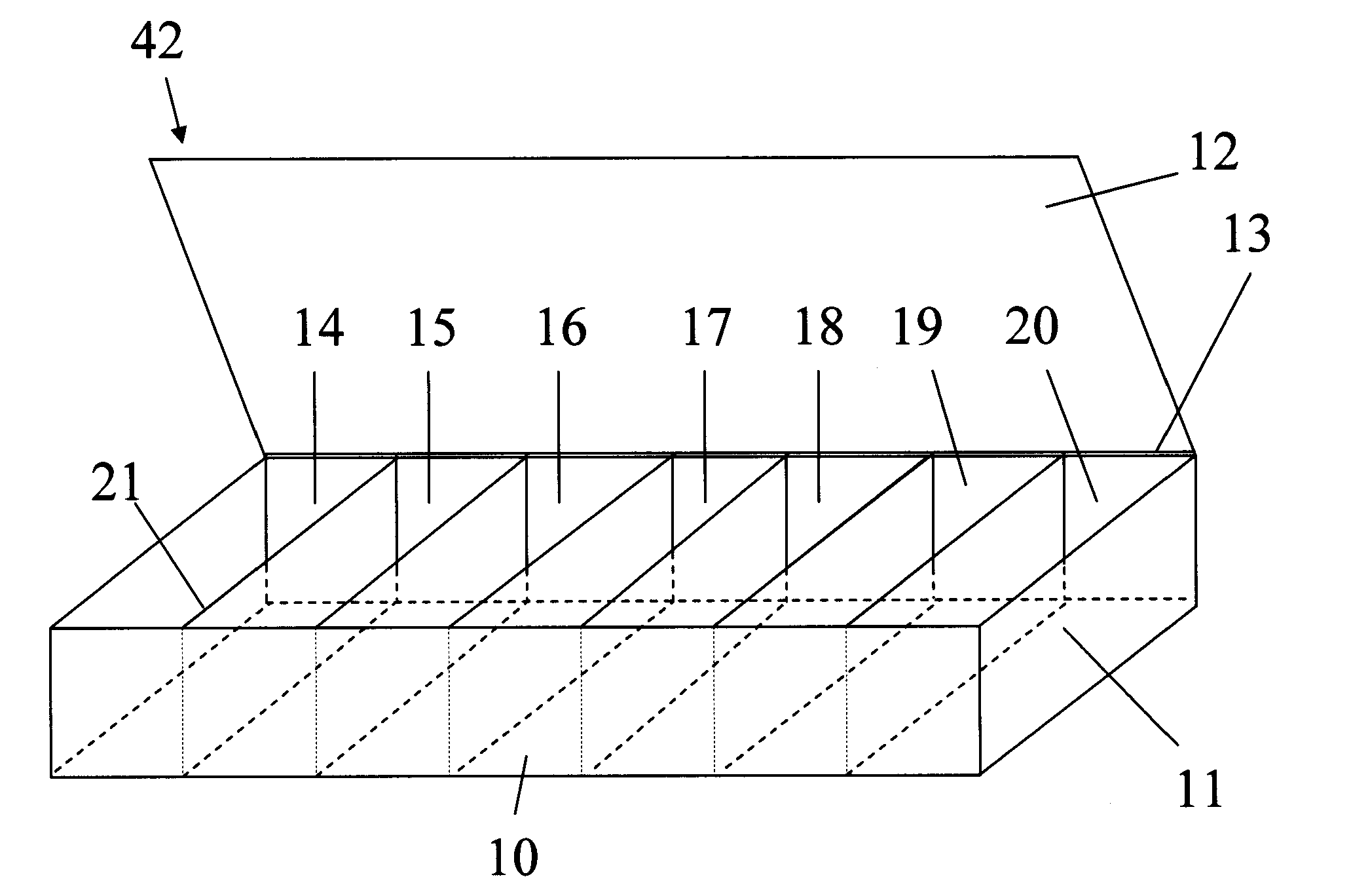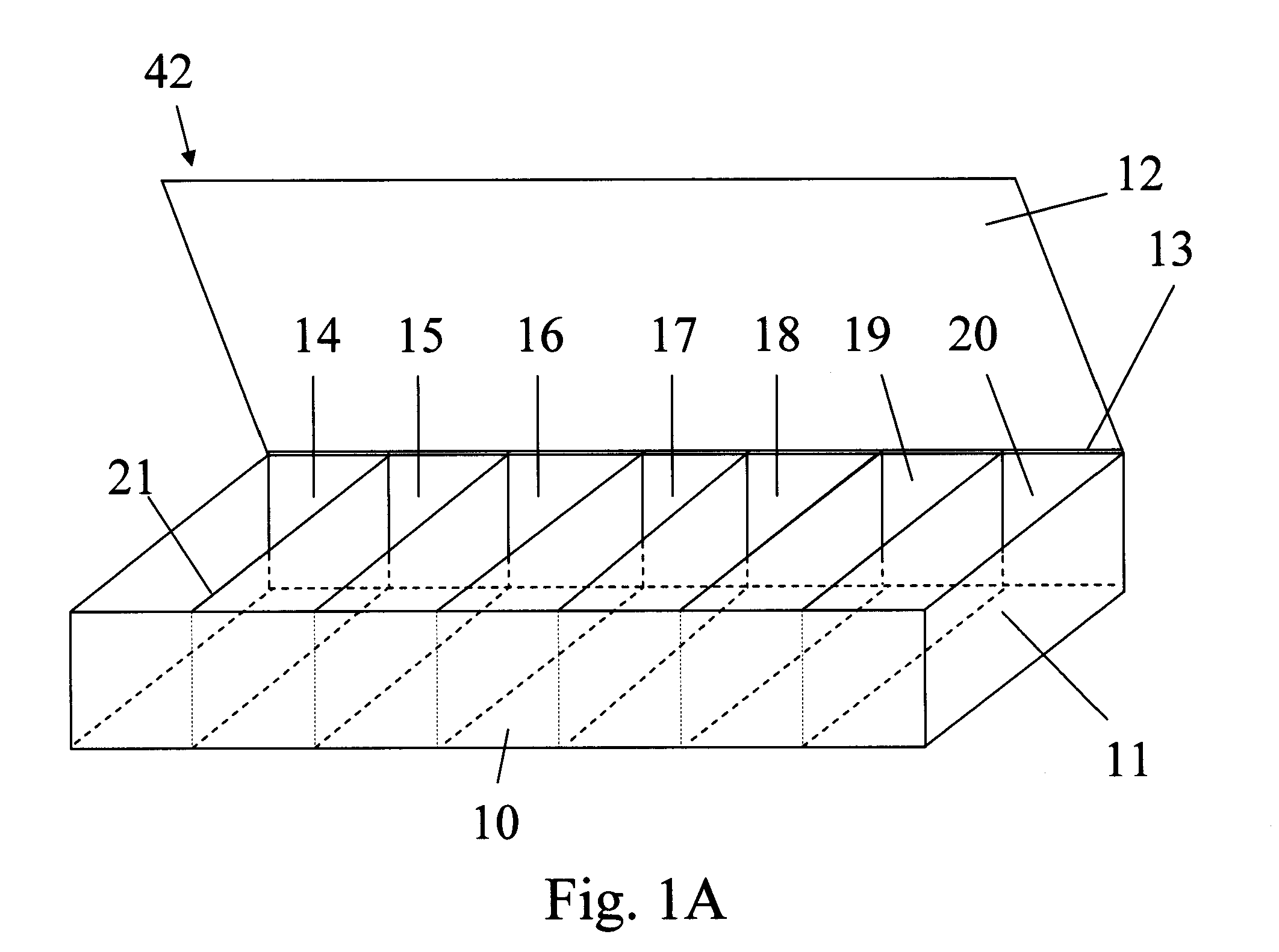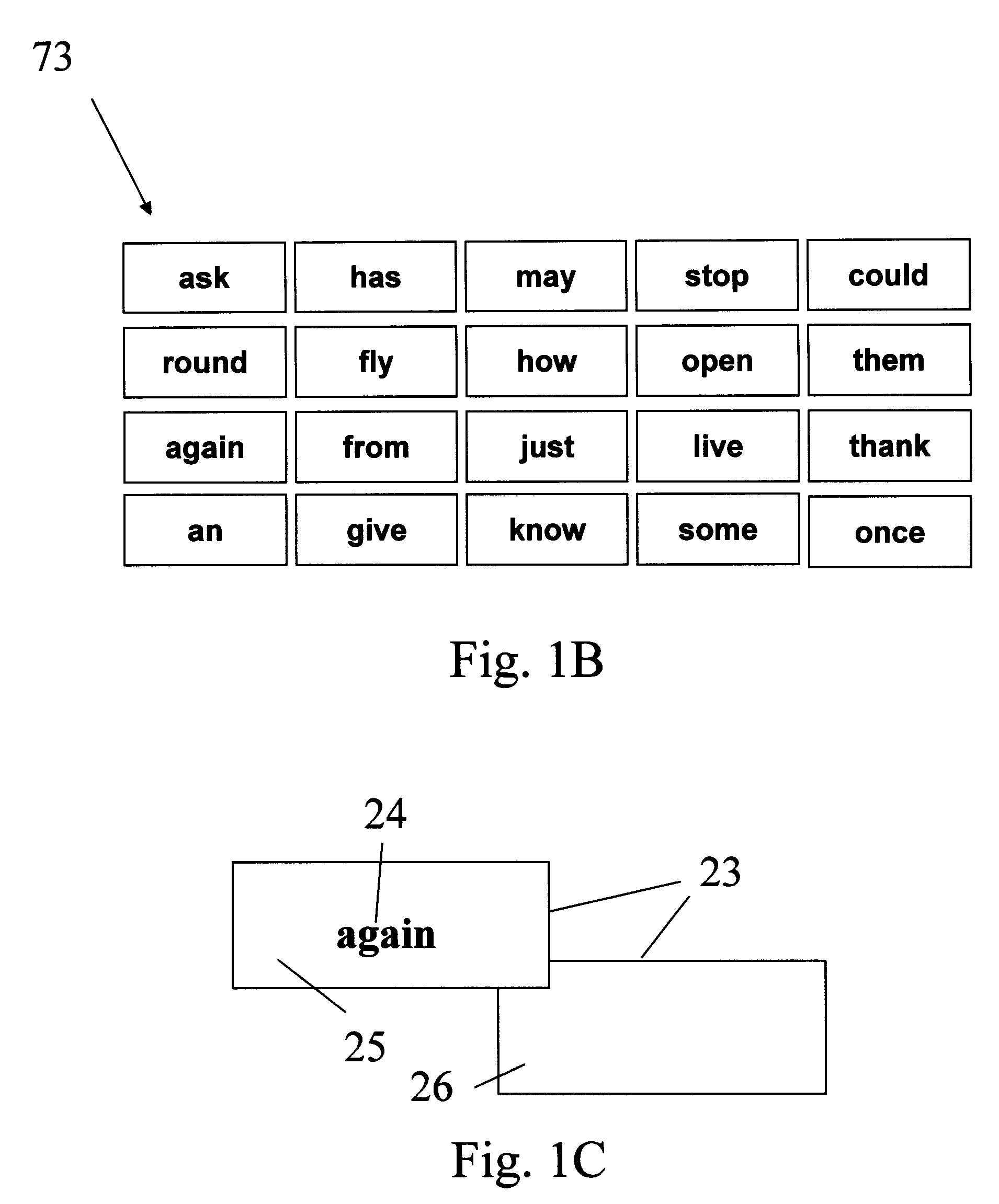Educational learning system and method
a learning system and learning method technology, applied in the field of educational learning system, can solve the problems of not being able to easily customize, customize or adapt and many of the tools now available to teachers are of little help in their quest, so as to increase the difficulty of material, improve the skill of subject matter, and be easily customized, personalized or adapted to the different needs of each student.
- Summary
- Abstract
- Description
- Claims
- Application Information
AI Technical Summary
Benefits of technology
Problems solved by technology
Method used
Image
Examples
Embodiment Construction
[0042]This section describes embodiments of the invention showing a learning system including game components and a method of using the game components that constitute an educational game that can be played by one or more players. The game components include a single-rowed container 42 and a plurality of individual flash cards 73, as illustrated in FIGS. 1A and 1B.
[0043]A preferred embodiment of container 42 is illustrated in FIG. 1A and contains seven compartments 14 through 20 that are preferably linearly aligned and are separated by interior compartment dividers 21. The compartments consist of a first compartment 14, a second compartment 15, a third compartment 16, a fourth compartment 17, a fifth compartment 18, a sixth compartment 19 and a seventh compartment 20. The size of container 42 may be approximately 3.5 cm in height, 28 cm in length and 6 cm in width. However, in other embodiments the container can have different sizes and relative dimensions and a varying number of co...
PUM
 Login to View More
Login to View More Abstract
Description
Claims
Application Information
 Login to View More
Login to View More - R&D
- Intellectual Property
- Life Sciences
- Materials
- Tech Scout
- Unparalleled Data Quality
- Higher Quality Content
- 60% Fewer Hallucinations
Browse by: Latest US Patents, China's latest patents, Technical Efficacy Thesaurus, Application Domain, Technology Topic, Popular Technical Reports.
© 2025 PatSnap. All rights reserved.Legal|Privacy policy|Modern Slavery Act Transparency Statement|Sitemap|About US| Contact US: help@patsnap.com



